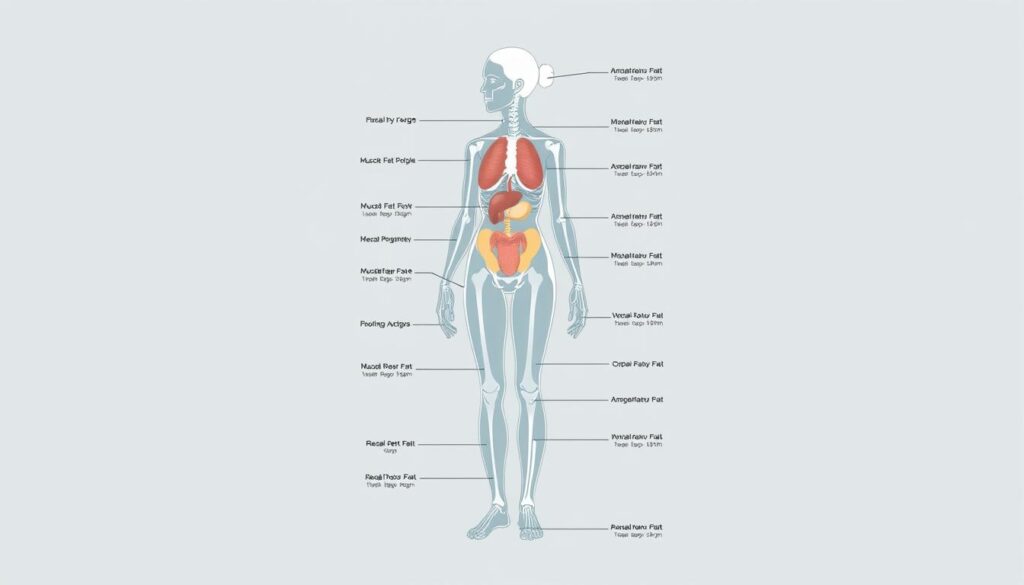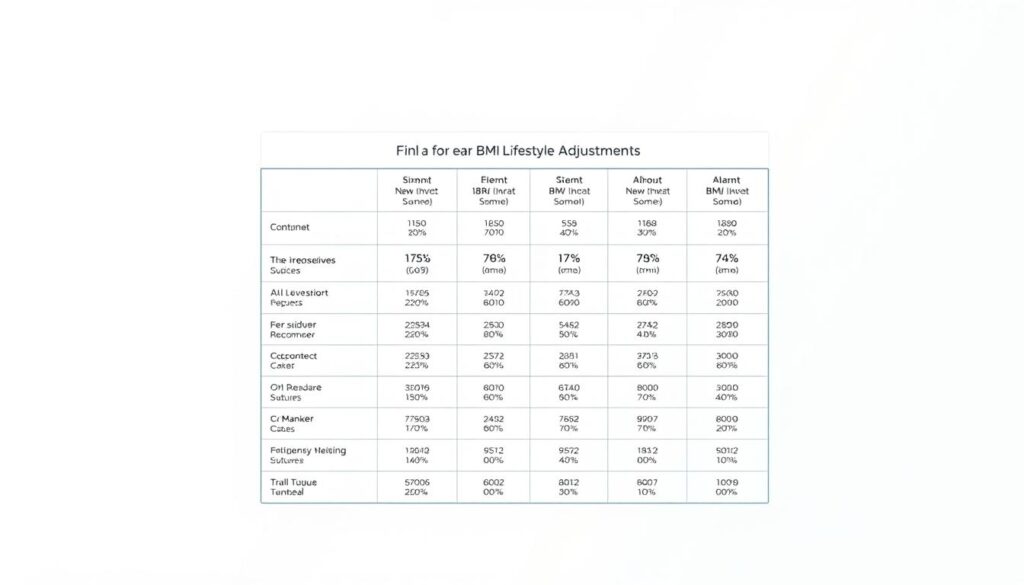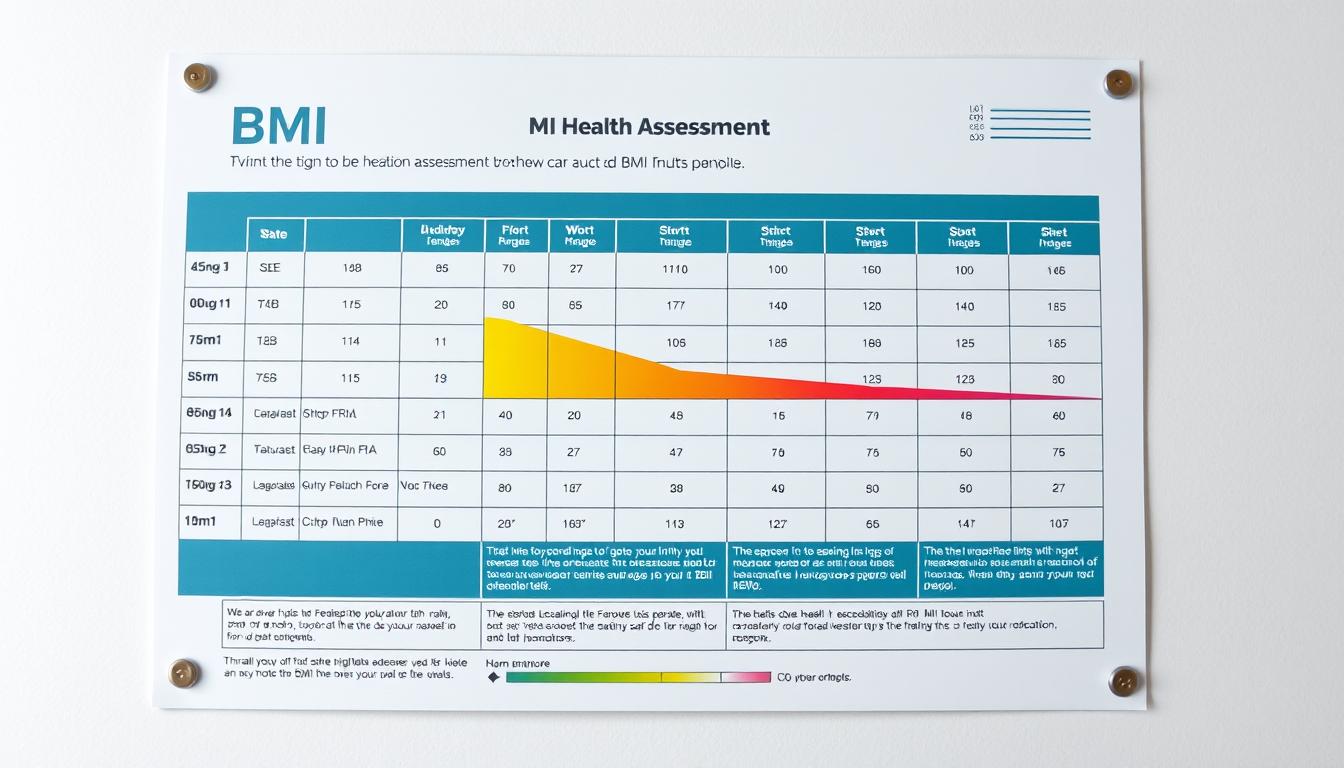Have you ever wondered if your current weight truly aligns with your height? For women standing 5 feet 3 inches tall, understanding body mass index (BMI) isn’t just a number—it’s a window into long-term wellness. This measurement helps identify potential risks linked to chronic conditions like heart disease or diabetes, according to the CDC.
Calculating BMI for a 5’3″ female involves precise height and weight metrics. Even small errors—like rounding measurements—can skew results. Tools like standardized calculators reduce inaccuracies, ensuring reliable insights into whether someone falls within a healthy weight range or faces elevated health risks.
Why does this matter? Research from the American Cancer Society ties higher BMI levels to increased chances of obesity-related illnesses. For shorter individuals, body composition plays an outsized role in overall well-being. This article breaks down how to measure BMI accurately at 5’3”, interpret results, and take actionable steps toward better health.
Key Takeaways
- BMI evaluates body fat relative to height and weight, offering insights into health risks.
- Accurate measurements are critical—imperfect data leads to misleading results.
- A 5’3″ female’s BMI range may differ slightly from taller individuals due to body proportions.
- High BMI correlates with conditions like diabetes, per CDC guidelines.
- Online calculators simplify the process but require precise inputs for reliability.
Understanding BMI and Its Role in Health
How does a simple calculation shape our understanding of wellness? Body Mass Index (BMI) measures body fat using weight and height, offering a standardized way to assess health risks. The CDC defines it as weight in kilograms divided by height in meters squared. For a 5’3” female, this metric helps identify whether their current body mass aligns with medical guidelines.
What Is BMI and Why It Matters
BMI categorizes individuals into underweight, healthy, overweight, or obese ranges. These classifications help predict risks for conditions like heart disease and type 2 diabetes. Research from the American Cancer Society shows higher BMI levels correlate with increased cancer likelihood. However, muscle mass and bone density aren’t factored in—a limitation noted by Medical News Today.
The Benefits of Knowing Your BMI
Tracking this index over time reveals trends in body composition. It’s a starting point for discussions with healthcare providers about lifestyle adjustments. For example, using a BMI calculator simplifies the process while minimizing errors. Though not perfect, it remains a widely accepted tool for gauging population-level health patterns.
Adults should pair BMI with other metrics—like waist circumference—for a fuller picture. Small changes in weight or activity levels can shift results, making regular checks valuable. Ultimately, knowledge empowers better decisions.
How to Calculate BMI Accurately
Precision matters when assessing your body composition through numbers. Even minor errors in measurements can distort results, leading to misguided assumptions about health risks. Let’s explore reliable methods to determine this metric correctly.

Step-by-Step Instructions for Measuring BMI
Begin by measuring height without shoes, using a wall-mounted stadiometer for accuracy. Record weight first thing in the morning on a calibrated scale. Convert these values: multiply height in inches by 0.0254 for meters, and weight in pounds by 0.4536 for kilograms.
Apply the formula: weight (kg) ÷ [height (m)]². For example, a person weighing 140 pounds (63.5 kg) at 63 inches (1.6 m) tall has a result of 24.8. Double-check calculations or use a CDC-approved worksheet to avoid arithmetic slips.
Using a BMI Calculator Effectively
Digital tools simplify the math but require careful input. Always verify the calculator uses kilograms and meters rather than imperial units. As the CDC notes,
“Manual verification of at least one calculation ensures the tool’s reliability.”
Reputable platforms like Medical News Today’s calculator preload formulas, reducing user error. Still, cross-reference results with manual methods if values seem inconsistent.
Common Mistakes to Avoid
Rounding measurements tops the list of pitfalls—a half-inch difference in height alters outcomes. Other blunders include:
- Weighing after meals or with heavy clothing
- Using non-standardized tools like bathroom mirrors for height checks
- Ignoring muscle mass, which skews results for athletic individuals
Medical News Today warns that body fat percentage and waist size provide context this metric alone can’t capture. Pair it with other health indicators for a complete assessment.
Key Considerations for bmi for 5 3 female
Body measurements at 5’3” require careful interpretation. Shorter individuals often carry weight differently than taller people, with fat distribution patterns influenced by height and biological sex. A 10-pound gain might shift BMI categories more dramatically for someone under 5’4”, according to CDC research on body mass index variations.

Understanding Height, Weight, and Body Composition
Muscle density and bone structure significantly impact results. Athletic women may register higher BMIs despite low body fat percentages—a flaw noted in clinical studies. The American Cancer Society found that waist-to-hip ratios better predict health risk for petite frames than BMI alone.
| BMI Category | Weight Range (lbs) | Health Considerations |
|---|---|---|
| 18.5–24.9 | 107–140 | Lowest disease risk |
| 25–29.9 | 141–168 | Moderate diabetes risk |
| 30+ | 169+ | Elevated heart issues |
Three critical factors alter BMI accuracy:
- Age-related muscle loss can mask obesity in seniors
- Dense breast tissue increases weight without raising fat levels
- Hydration status temporarily skews scale readings
Clinicians often pair BMI with skinfold measurements or DEXA scans for precision. These methods account for lean mass and visceral fat—variables the standard formula overlooks.
Interpreting BMI Results and Lifestyle Adjustments
Decoding your BMI score opens doors to personalized health strategies. Once you know your category—underweight, normal, overweight, or obese—you can tailor habits to reduce risks. For example, falling into the 18.5–24.9 range suggests lower chances of heart issues, while higher values signal a need for changes.

Making Informed Decisions Based on BMI
If your result leans toward overweight or obesity, focus on sustainable shifts. The CDC links a 5–10% weight loss to improved blood pressure and diabetes management. Start with small steps: swap sugary drinks for water or add 30 minutes of daily activity. Pairing these changes with tracking tools—like food journals—helps maintain progress.
Additional Methods for Assessing Health
BMI alone doesn’t tell the full story. Waist circumference above 35 inches for women raises heart disease risks, per the American Cancer Society. Body fat percentage tests—via skinfold calipers or smart scales—add clarity, especially for muscular individuals. As Medical News Today notes:
“Combining metrics like waist-to-hip ratio with BMI paints a clearer picture of metabolic health.”
Always discuss results with a doctor. They might recommend blood tests or fitness assessments to address specific concerns. Remember, numbers guide—not define—your journey.
Conclusion
Empowering health decisions relies on accurately interpreting body measurements. For individuals of shorter stature, precise calculations ensure BMI reflects true health risks. Tools like verified calculators minimize errors, while pairing results with waist circumference or health assessments offers deeper insights.
Regularly tracking these metrics helps identify trends. Small changes in weight or activity levels can significantly impact long-term wellness. The CDC underscores that combining BMI with other data—like blood pressure—creates a clearer picture of body health.
Remember: numbers guide but don’t define your journey. Consult healthcare providers to tailor strategies that fit your unique needs. Knowledge paired with action fosters lasting change.

